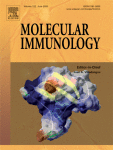Ver ítem
- xmlui.general.dspace_homeCentros e Institutos de InvestigaciónCICVyA. Centro de Investigación en Ciencias Veterinarias y AgronómicasInstituto de PatobiologíaArtículos científicosxmlui.ArtifactBrowser.ItemViewer.trail
- Inicio
- Centros e Institutos de Investigación
- CICVyA. Centro de Investigación en Ciencias Veterinarias y Agronómicas
- Instituto de Patobiología
- Artículos científicos
- Ver ítem
In vivo neutralization of bee venom lethality by IgY antibodies
Resumen
Bee venom is a complex mixture of molecules, among which melittin and phospholipase A2 (PLA2) are the toxic components involved in envenoming accidents with multiple honeybee stings. Traditionally, the treatment of envenomings has been based on the administration of specific antibodies to neutralize the deleterious effects of toxins. An alternative to mammalian polyclonal antibodies is the use of egg yolk immunoglobulins (IgY) due to their advantages
[ver mas...]
Bee venom is a complex mixture of molecules, among which melittin and phospholipase A2 (PLA2) are the toxic components involved in envenoming accidents with multiple honeybee stings. Traditionally, the treatment of envenomings has been based on the administration of specific antibodies to neutralize the deleterious effects of toxins. An alternative to mammalian polyclonal antibodies is the use of egg yolk immunoglobulins (IgY) due to their advantages regarding animal welfare and lower costs of production as compared to the conventional production methods. In this work, a novel composition containing specific IgY antibodies was developed. After four immunizations, IgY extracted from the egg yolks was able to recognize several components of the bee venom, including melittin and PLA2. The performance of IgY to neutralize the lethal activity was evaluated in a mouse model by using one median lethal dose (LD50) of the bee venom. The effective dose of the IgY extract was determined as 30.66 μg/mg. These results demonstrate the feasibility to produce IgY-based antivenoms to treat envenomings by multiple bee stings.
[Cerrar]

Autor
Leiva, Carlos Leónidas;
Geoghegan, Patricia;
Lammer, Mónica;
Cangelosi, Adriana;
Mariconda, Virginia;
Celi Castillo, Ana Beatriz;
Brero, Luisa;
Chacana, Pablo;
Fuente
Molecular Immunology 135 : 183-190 (Julio 2021)
Fecha
2021-07
Editorial
Elsevier
ISSN
1872-9142
Formato
pdf
Tipo de documento
artículo
Palabras Claves
Derechos de acceso
Restringido
 Excepto donde se diga explicitamente, este item se publica bajo la siguiente descripción: Creative Commons Attribution-NonCommercial-ShareAlike 2.5 Unported (CC BY-NC-SA 2.5)
Excepto donde se diga explicitamente, este item se publica bajo la siguiente descripción: Creative Commons Attribution-NonCommercial-ShareAlike 2.5 Unported (CC BY-NC-SA 2.5)

